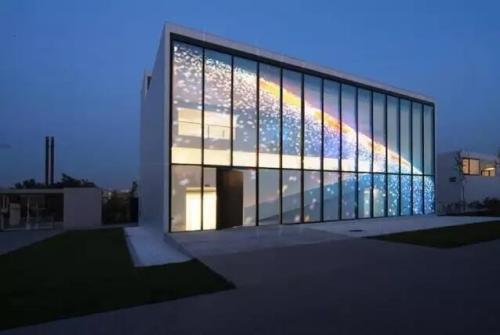Non-imaging optics is used in the analysis of LED lighting, and there is an increasing shortage of energy in the world.

At this stage, under the situation of increasing global energy shortage, energy conservation and consumption reduction has become a serious problem that we have to face. While the lighting system brings light to people, it also consumes electricity all the time. In order to minimize the consumption of electric energy, energy-saving lighting systems are receiving more and more attention. LEDs are widely used in many fields due to their low energy consumption, long service life and high economical efficiency. In the past, the design of LED lighting system was completed by using the model in the experiment. Once the optical characteristics were found to be inconsistent after the design was completed, it must be redesigned, which wastes a lot of manpower and financial resources. With the continuous development and advancement of applied optics, the theory of non-imaging optics and its methods have also been improved. Based on this point, this paper discusses the application of non-imaging optics to LED lighting.
1 Non-imaging optics and related concepts
1.1 Non-imaging optics
Unlike traditional imaging optics, non-imaging optics does not focus on the quality of the light source after imaging and imaging on the target plane. The main focus is on the energy efficiency of the light source and the specific distribution of the energy in azimuth and space. Happening. As shown in FIG. 1, in the imaging optical system, the light intensity and position information of the object point are mainly transmitted, and in the non-imaging optical system, the energy of the object point is mainly transmitted and recombined and distributed.
Figure 1 Schematic diagram of imaging optics and non-imaging optics
1.2 Energy Harvesting Rate
Non-imaging optics is mainly concerned with the distribution of energy. If a non-imaging optics model as shown in Fig. 2 is established, it can be clearly seen that the plane represented by A is the plane of the incident aperture, and the plane where A is located. Then it is the exit aperture area. Next, we assume that the exit aperture area A of the device allows all light to pass through this area, and the ratio c between the incident beam area and the outgoing beam area is the energy collection rate. In general, the maximum energy collection rate in a 2D system is C2D=l/sin, while in a rotationally symmetric 3D system, the maximum collection rate is C3D=1/sin2θ. The concept of energy harvesting rate is primarily used in the evaluation of non-imaging optical systems.
Figure 2 Concept of energy harvesting rate
1.3 Geometric optics
At present, geometric optics has been widely used in the design of optical systems. Both imaging optics and non-imaging optics must be based on the theory of geometric optics. There are four basic laws in geometric optics, namely the law of linear propagation of light, the law of independent propagation, the law of refraction, and the law of reflection.
(1) The law of linear propagation of light. This law mainly explains the problem that light travels along a straight line in a homogeneous and homogeneous medium.
(2) The law of independent propagation of light. When the light beams emitted by different light sources pass through a certain point in space in various directions, they are independent of each other and do not affect each other.
(3) The law of reflection of light. When the three rays of incidence, reflection and projection are in the same plane, the reflection angle is equal to the absolute value of the incident angle and the sign is opposite. At this time, the incident and reflected rays are located on both sides of the normal of the projection point.
(4) The law of refraction of light. Similar to the law of reflection, when the three rays are in the same plane, the ratio of the incident angle to the sine of the angle of refraction does not depend on the angle, which is mainly related to the specific properties of the medium.
2 LED characteristics and classification
Before introducing the characteristics and classification of LEDs, let us first understand the concept of LEDs. The so-called LEDs are the abbreviation of English Light Emitting Diode. Chinese means LED, which is a semiconductor device that can convert electrical energy into visible light. Devices often exist in solid form. The key core in the LED is a semiconductor wafer, which is mainly composed of two parts of a P-type semiconductor and an N-type semiconductor.
2.1 Main features of LED
Since the LED adopts the principle of electric field illumination, its characteristics are very obvious, and can be summarized as follows:
(1) Long service life. The average LED life can reach 10 years or so. This is because the LED is different from the conventional light source, and it does not suddenly work or burn out like a tungsten filament. Its damage is mainly caused by the gradual decrease of the luminescence performance. For example, the LUXEON series manufactured by Philips can maintain its luminous intensity at around 70% of the initial value after 50,000 hours of use.
(2) The maintenance cost is low. Under normal circumstances, compared with ordinary light sources, the service life of LEDs is equivalent to more than 10 times of them, so that the cost of light source replacement is greatly reduced, and corresponding maintenance costs and labor costs are also reduced.
(3) Low energy consumption. LEDs are much more efficient than fluorescent or incandescent lamps. The XR-E model produced by Gree has an LED luminosity of over 1001m/W. From the perspective of energy conservation, the higher the energy conversion efficiency, the less energy consumption under the same illumination, which is one of the biggest advantages of LED.
(4) Small size. This feature is mainly for LED chips. The current LED chips can be as small as millimeters. For example, Rebel, which was developed and manufactured by Lumileds, USA, has a package size of only 3x4.5x2.1 (units) and a chip size of only lmmx1mm. This small size is very convenient for optical design and can effectively reduce the energy loss of the system.
(5) Strong directionality. In terms of the distance of illumination, LEDs can definitely be designed as point sources. Generally, in the optical design, in order to simplify the design steps, the required light source is split into several point light sources, and these light sources can be replaced by LEDs. At the same time, the LED can also be distributed on the surface of an object, and simulate the shape of the object to emit light, such as landscape lighting, architectural outline lighting and the like.
(6) Solid-state lighting, green and environmental protection. LED is a solid-state lighting source, which does not contain glass material that is easily broken, and has high impact and vibration resistance, so it can be used in harsh environments. At the same time, LED does not contain toxic and harmful substances such as mercury, and the environmental friendliness is high. In addition, the LED does not contain infrared or ultraviolet light, which will not cause damage to the object to be illuminated, and also effectively improve the utilization of light energy.
(7) Low working voltage, suitable for working under low temperature conditions. The main working mode of LED is low-voltage DC power supply, which makes its safety fully reflected. At the same time, it can work under low temperature conditions, and the experiment proves that it can work at -40 degrees Celsius. Based on this, it can be applied to lighting systems and automotive lighting systems in refrigerators.
2.2 LED classification
At present, LED has a very good market prospect, so there are more and more LED manufacturers. There is no uniform standard for LED classification in China. Usually, it can be classified according to chip power, color, and wavelength.
(1) Chip power. According to the power of the LED chip, it can be divided into the following types: 1 single lamp with output power of several tens of mW, that is, small power chip; 2 power LED. Refers to LEDs with input power less than 1W; 3 high power LEDs. Specifically, it refers to an LED with an input power of ≥1w.
(2) Luminous color and wavelength. Different wavelengths determine the different colors of light. According to the wavelength of the light wave of the LED, it can be divided into an infrared receiving tube and a reflecting tube, and an ultraviolet LED having a wavelength shorter than 390 nm.
3 Specific application of non-imaging optics in LED lighting system design
LED lighting systems should first determine the design requirements and conditions, such as materials, lighting system structure, light source distribution, etc., according to these relevant requirements to determine which optical design, which is 2D system, rotational symmetry system or It is a 3D system and then chooses different design methods according to the specific optical design. The size of the LED chip is generally negligible, and a point light source scheme can be used to further simplify the design steps.
3.1 Optical coupling system design
Typically, a collimated surface light source is often required for practical applications such as projection lamps, projector sources, and night lighting systems. Specifically, it is necessary to obtain a surface light source with a relatively small projection angle. When the light is projected onto the object, it will be captured by the human eye after diffuse reflection. We can think of the LED chip as an approximate Lambertian source, its divergence angle is relatively large, and the far-field distribution can not meet the requirements. At the same time, the light energy output by the single power type LED chip can not reach the actual required brightness. To this end, the collimated LED optical system not only needs to achieve a collimated output of light emitted by the LED chip over a large area, but must also be easily expanded. Some designs usually use secondary optics in order to achieve a collimated source. The so-called secondary optics specifically refers to the use of a collimating lens in conjunction with a packaged LED to achieve collimation. However, the LED lighting system designed by this method has certain defects, that is, the additional loss caused by the air gap between the lens and the LED. Let's assume that the chip is packaged directly with _ collimating lenses to prevent air gaps. The package lens is designed to be a cap type due to the need for rotational symmetry. At this time, the LED chip is used as a light source in the illumination system, which is immersed in the lens, and the light source emitted by the LED is collimated in three different ways. In order to further realize a large-area collimated light source, the lens must be designed to have certain scalability. Therefore, the upper surface of the lens can be designed as a regular hexagon, so that the LED light field after the package can be concentrated in a small emission angle, thereby realizing the requirement of the collimated light source.
3.2 Indoor lighting source design
Since the indoor illumination source is easily viewed by the human eye, its illumination surface should be as uniform and soft as possible. At the same time, because indoor lighting must have a large range, this requires that the divergence angle should be at least greater than 120°. In order to satisfy these requirements as much as possible, and to ensure that the light source can be utilized to the best, it is necessary to make the light source emitted by the LED illumination uniformly and divergently illuminate the light-emitting surface. Because the main light source in the room is generally placed at the center of the room, so that its light field shape has rotational symmetry. Therefore, in the design process of a given distribution, not only the exit angle of the light should be controlled, but also the energy transfer of the light source should be controlled. This design enables the light source's light extraction angle to be controlled within ±60°, and further achieves a uniform distribution of far-field light intensity, which is completely consistent with the requirements of indoor lighting for the light source.
3.3 Three-dimensional given light distribution design
In indoor lighting, we mainly study the two-dimensional given light distribution design, and in order to achieve some complex and practical given light distribution, we must understand its design method in three dimensions. When designing a three-dimensional given light, the design idea can be determined according to specific requirements. Usually, the three-dimensional free surface of the separated variable can be used for design, so that the rectangular illuminance distribution can be easily obtained. The design idea is more applicable to the design of the LED street lamp. broad.





